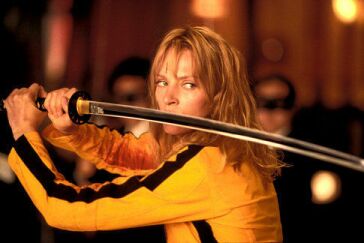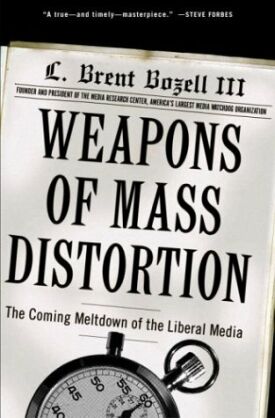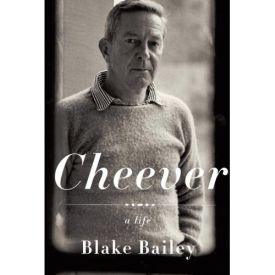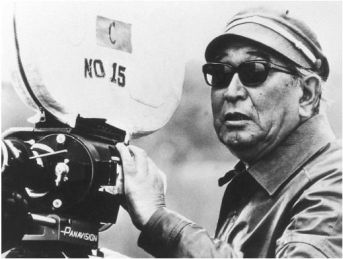Pulp Garbage
From The American SpectatorTo be a movie critic is to live with disappointment. Every now and then we have the pleasure of a Showgirls — a movie universally damned by critics, including me, and public alike — to cut through, for just a moment, our haunting sense of failure. But much, much more often the movies we like are ignored by the public and the movies we hate prove to be box-office smashes. So when I looked into my morning paper on the Monday after it opened and saw that Quentin Tarantino’s Kill Bill Volume 1 had romped home at number one for the weekend with takings of $22.7 million, it was with a feeling of heart-heaviness that was hardly unfamiliar. True, there was the additional disappointment that came from having allowed myself the half-hope that the movie’s failure would be so resounding as to bring down Miramax and Harvey Weinstein — who famously said that his studio was “the house that Quentin Tarantino built” with the smash-hit Pulp Fiction in 1994 — and maybe Disney into the bargain. But, deep down, I knew that that was too much to hope for.
The one comfort critics often have in seeing their judgments rejected so emphatically is a sense of solidarity among themselves. They even take a certain pride — now it can be told! — in their lonely advocacy of minority opinions which may be supposed to demonstrate their superior taste. In the case of Kill Bill, however, there was nothing like a critical consensus. In fact, there could hardly be a movie better calculated to divide the critical fraternity between those who loved and those who hated it. It’s hard to imagine that there could be any third view of it, though some of those who hated it damned it with faint praise — I suspect just to show that they “got” it and were under no illusions that Tarantino was trying and failing to make a movie that looks like real life. He was, of course, not. Instead, he was trying to make a movie that looks like other movies — and the more obscure, junky and unwatchable the other movies are the better he likes them.
This has always been his modus operandi and makes him the Prince of Postmodernists. But he goes further than this. Knowing that if you make a movie that is an imitation not of life but of other movies it will bear the marks of its artificiality, he goes all out to emphasize these — as if to make sure that the dimmer sort of critics will “get” it. Thus he puts a slightly built young woman, played by Uma Thurman and known in the movie only as “The Bride” or Black Mamba, into the classic role of the honor-bound seeker of revenge. He portrays her cutting a pathway through a phalanx of enemies, most of them men much larger than herself, to get at the object of revenge, not because he doesn’t know that this makes the very idea of the honor quest into an absurdity but because he does. Making it an absurdity is part of his purpose. Who could come away from Kill Bill with anything remaining of what is already the vestigial idea of what it means to be “a man”?
But he’s not doing it for ideological reasons This movie does not touch real life at any point — not even that point — and Tarantino is proud of it. He told Hugh Davies of the London Daily Telegraph that Kill Bill “definitely does not take place on planet Earth.” For once, this is an understatement. Lots of movies don’t take place on planet Earth, but put recognizable human characters — sometimes in elaborate alien prostheses — on other planets or on spaceships between planets. Kill Bill doesn’t deal with any such trivial detachment from reality as that. Instead it aims for and achieves an effortlessly complete dissociation from the universe as we know it. As the Asian production designer put it to Rick Lyman of the New York Times, “There is a reality to Kill Bill, but it is not the reality of the world. . . It is the reality of Quentin’s world, and that is a somewhat different place. We are in Tokyo, we are in Okinawa, we are in a Chinese temple, but at all times, really we are in the world of Quentin.”
The world of Quentin is also the world of movies, where the further removed from reality we are the more pure the style. Those who love this kind of movie love it because it is the cinematic equivalent of abstract painting — well, that and the fact that it gives them a chance to compete with each other by showing how many of its non-stop allusions to otherwise forgotten junk cinema they recognize. They are such dedicated movie-lovers that they naturally love it for being all movie, and having no messy, distracting connections to the world of flesh and blood. I mean actual flesh and blood, of course, not the movie kind whose promiscuous spraying about the set is one of the picture’s most egregious features. I am not a movie lover in that sense, and so I hate this movie. I think it is one of the worst movies ever. Practically everybody is killed but Bill, whom we never meet — though presumably he gets his in Volume 2 — and all are killed by little Uma, the one-woman death squad. Gushing blood is the only idea in the film, which gives new meaning to the expression “gratuitous violence.”
Actually, in this movie the lovingly choreographed violence is really the only point, so it would be more accurate to say that everything else in it, any fragmentary remains of drama or character or morality are what are gratuitous. Quentin Tarantino once tried to make a movie for grown-ups. It was called Jackie Brown. It wasn’t terrible but it wasn’t very good either. And it didn’t do very well at the box office. All the cool people who made Pulp Fiction and Reservoir Dogs into such hits didn’t care much for it. So he decided to fall back on the sort of adolescent fare he knows best. Kill Bill goes way beyond pulp fiction, all the way back to comic books and video games. He’s given up trying to speak to adults, apart from the movie-buffs like himself who imagine that a pure passion for the movies demands that they cultivate in themselves — or preserve well beyond its natural life-span — the sensibility of 12-year-old boys. To me there’s something rather pathetic about grown men who still believe in “cool” as something that trumps truth, goodness and beauty, but I admit that they may be right about the movies, in which “cool” really does seem to come across better than any of those things.
There are at least enough of the truth-goodness-beauty critics around that I didn’t feel as if I were completely isolated in hating Kill Bill. It was a different story with another up-to-date treatment of the great theme of revenge, Clint Eastwood’s Mystic River. Mr Eastwood, either because he is trying to live down his image as tough-guy (and revenge taker) from the Dirty Harry films and Sergio Leone Westerns or because he wants to suck up to the liberal cultural establishment and be hailed, as he duly has been hailed, as a sensitive guy and an artist, gives us a portrait of revenge as the product of the primitive, male-dominated Boston-Irish culture that famously continues to prize the old-fashioned masculine virtues. Thus isolated, socially and culturally, and tied to ancient and outmoded ideas of masculinity, revenge is made out to be not only wrong but also very much less cool than it is in Kill Bill. In fact, it is revenge’s uncoolness rather than its wrongness that is most prominent here. Uma Thurman in a yellow jump-suit and wielding a samurai sword could have turned this movie’s ethic on a dime.
This is partly, too, because the point that revenge is wrong is never actually made. We only feel it has been made because it is a mistake. If the first surmise of Jimmy Markum (Sean Penn) had been correct and the murderer of his daughter had been the conscienceless pervert he vowed to kill, we should have had a much harder time clucking our tongues at his mindless perpetuation of the “cycle of violence.” And that the victim of Jimmy was earlier the victim of, well, conscienceless perverts, only adds to the readiness with which we are prepared to endorse the cultural consensus that violence is a sort of disease that you catch from others and that grows and thrives where emotions are repressed and honor is prized — or at least prized by inarticulate louts in black leather as opposed to cute blondes in yellow leather. It is nowadays an utterly uncontroversial point to make, and making it is almost enough by itself to win Eastwood the kind of plaudits from my sort of critics that Tarantino is getting from the other sort. It’s only those of us who believe in the classic themes of literature and drama who are likely to condemn both, and there are not many of us left.
Discover more from James Bowman
Subscribe to get the latest posts to your email.







